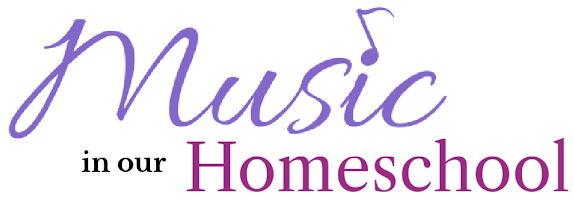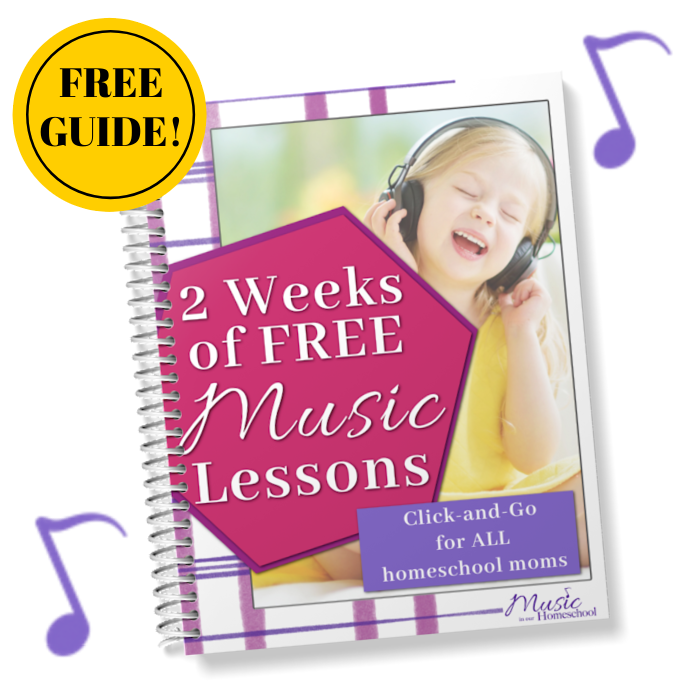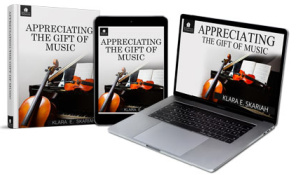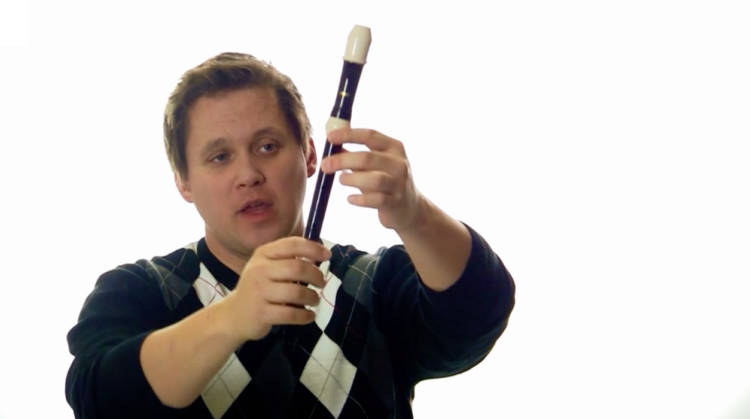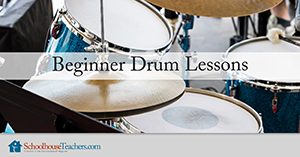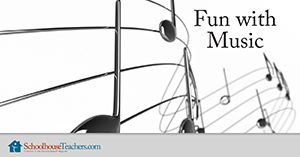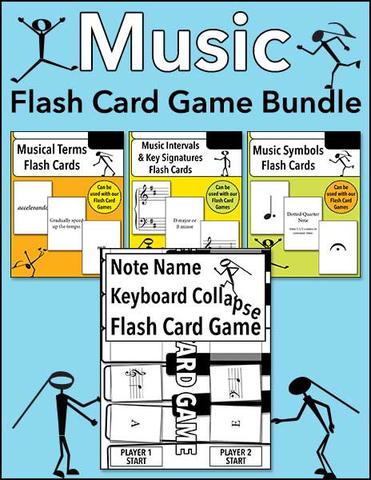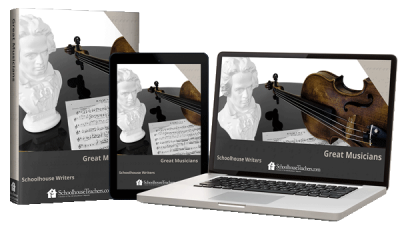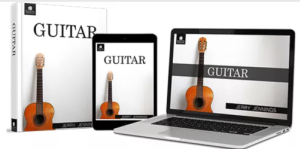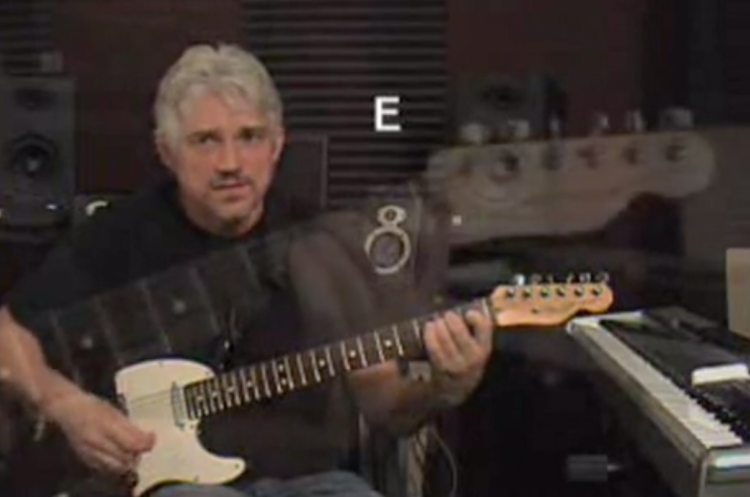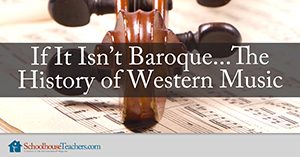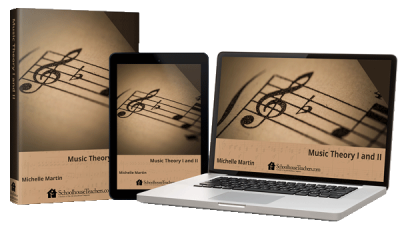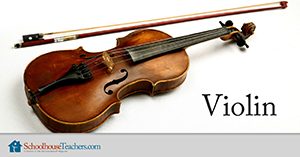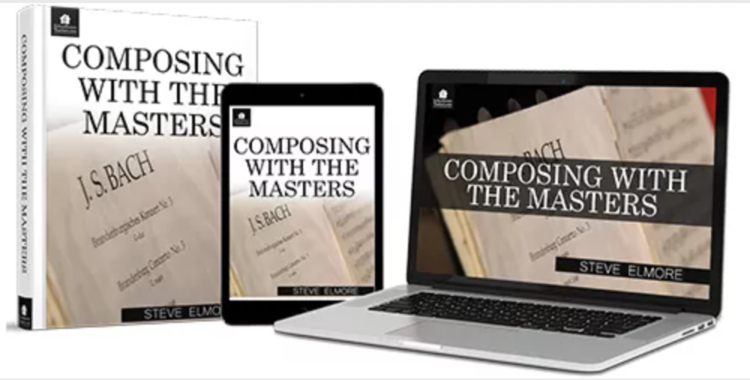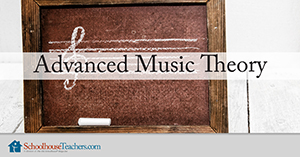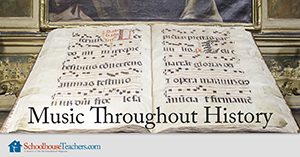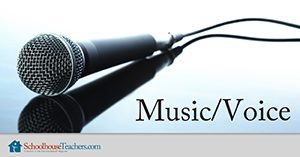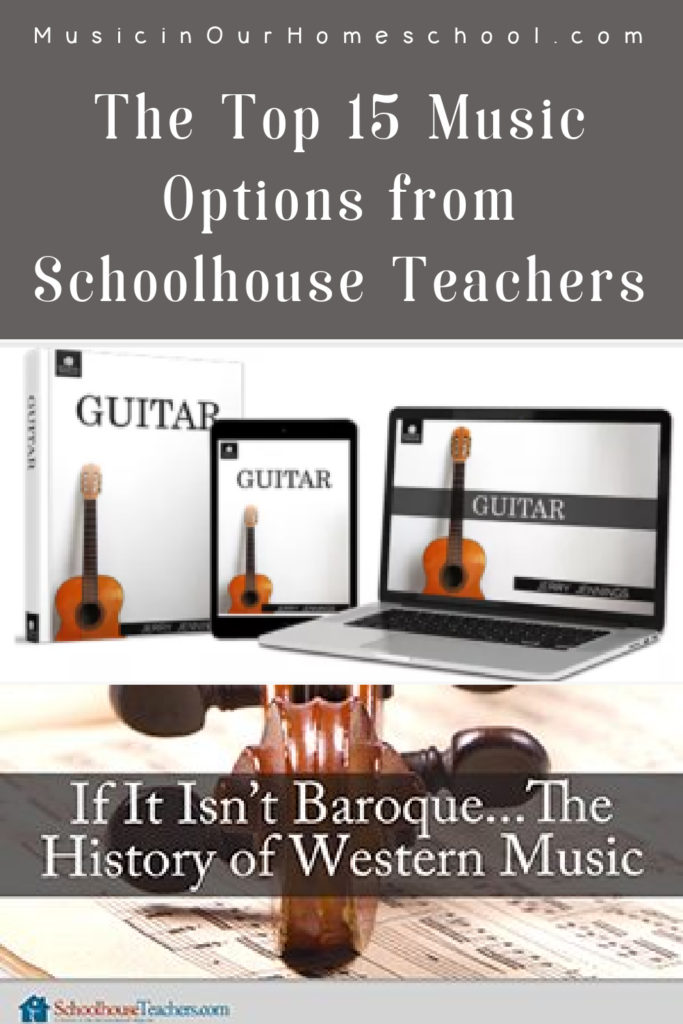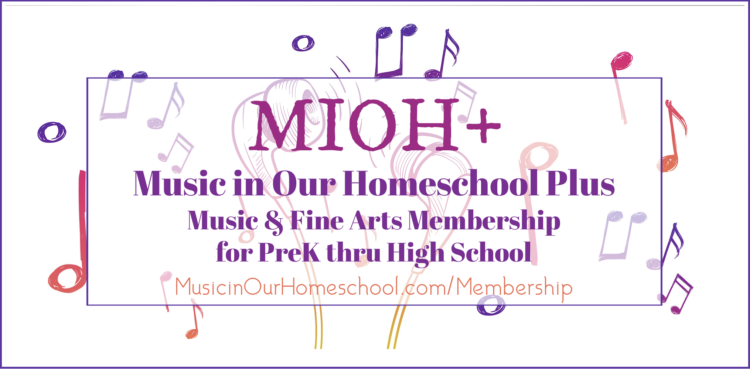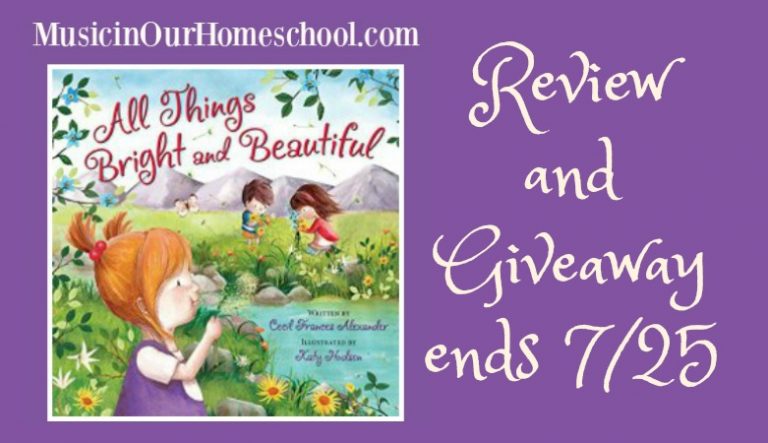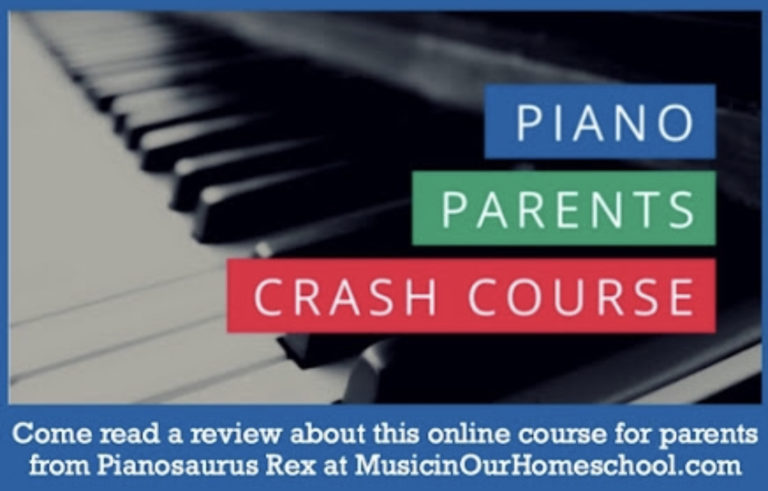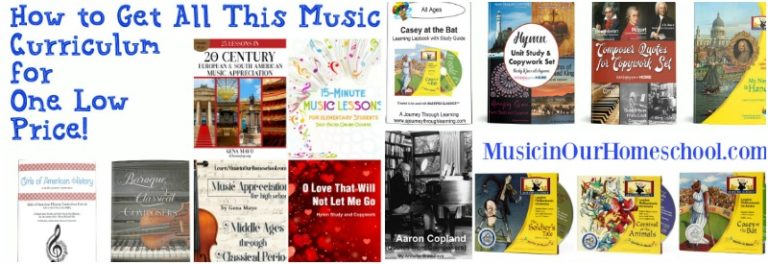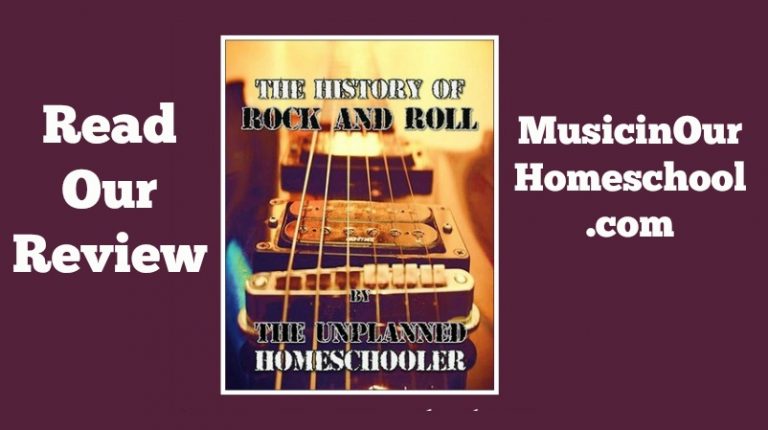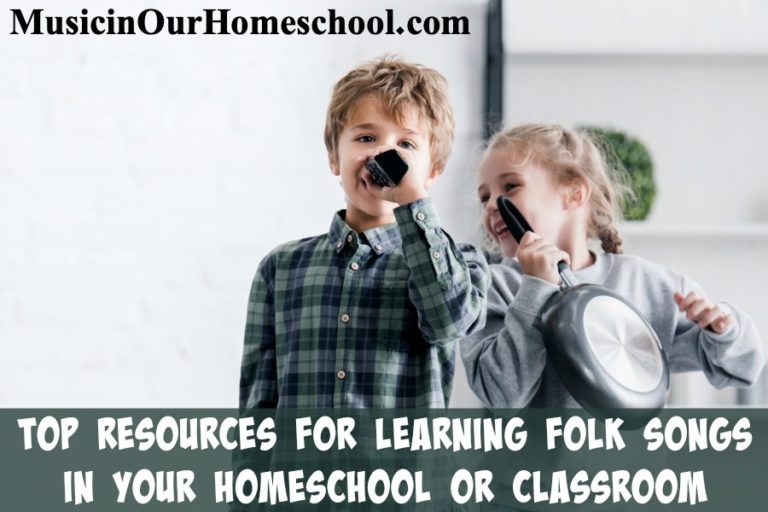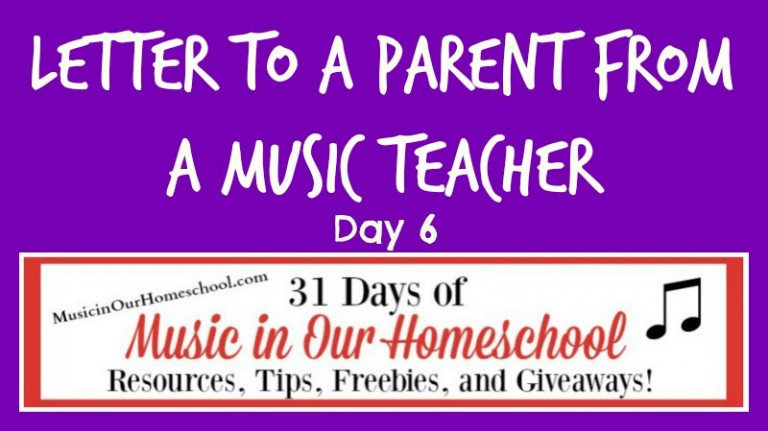The Top 15 Music Options from SchoolhouseTeachers. com
I’ve spent the past week researching the SchoolhouseTeachers. com membership site. This amazing resource has been around for 10 years and is specifically focused on helping homeschoolers. So they perfectly understand our needs and desires. If you’re looking for music lessons in music theory, music history, or music appreciation or lessons in violin, guitar, recorder, and voice, you’ll love today’s post on the Top 15 Music Options from SchoolhouseTeachers. com!
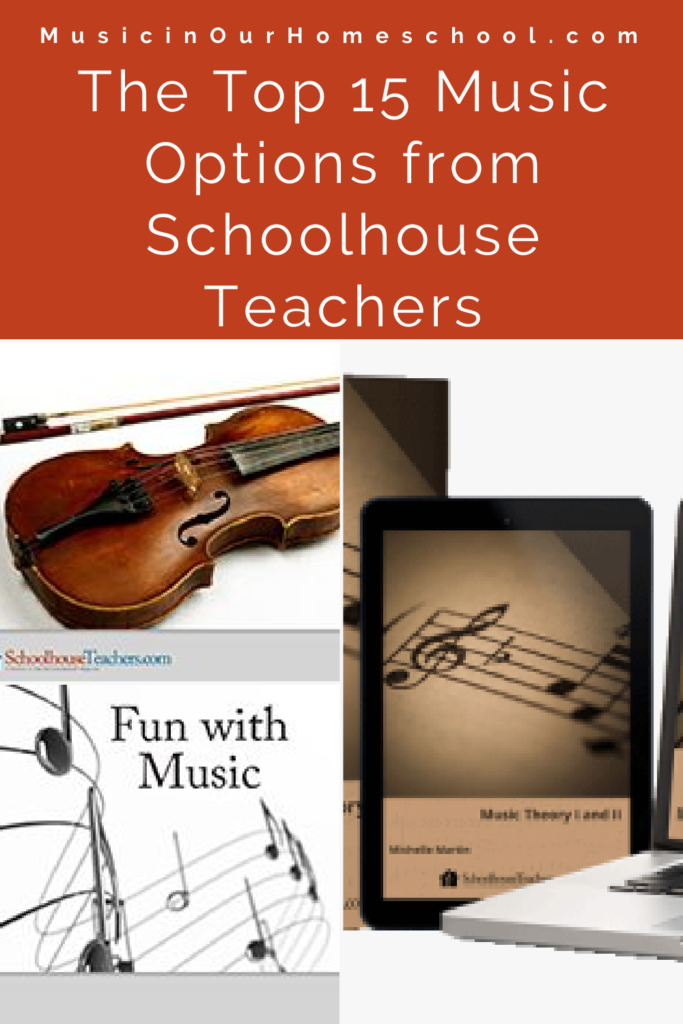
Disclosure: I get commissions for purchases made through affiliate links in this post. I received a free annual subscription to Schoolhouse Teachers in order to effectively write this post, and I was compensated for my time. All opinions are honest and my own.
Here are the Music Options from SchoolhouseTeachers. com
Remember, with a membership, you get access to ALL of these as well as courses for every other school subject you can think of!
Preschool Playground: Arts, Crafts, and Music
This 46-page ebook gives you over 30 ideas for adding arts, crafts, and music to your preschooler’s day! Specifically for music, you’ll get ideas for
- having fun with variety
- contrasting high and low
- specific classical music pieces that preschoolers love
- adding in Christian music
- secular music ideas
- some great songs to sing with your kids
- teaching foreign language with songs
- ways to weave music into your day
- instruments to add to your preschool homeschool
Appreciating the Gift of Music
Eighteen Appreciating the Gift of Music homeschool lessons are designed as a fun introduction to instruments, well-known musical pieces, and rhythm for young homeschool students. The main focus in this series of Appreciating the Gift of Music homeschool lessons is for children to enjoy music. The young homeschool student learns how his or her own body can operate as an instrument and the different sounds it can make.
Later lessons focus on various instruments, as the student learns that instruments are in families, just like they are part of a family. After reviewing what they have learned, the young student explores three well-known instrumental pieces. Appreciating the Gift of Music homeschool lessons go on to teach the difference between rhythm and beat, and the student has fun trying different rhythms and beats. Most homeschool music lessons in this course include one or two work/activity sheets for the child.
- Lesson One: My Body Can Make Noises – Just Sing
- Lesson Two: The Piano
- Lesson Three: The Guitar
- Lesson Four: The Violin
- Lesson Five: The Trumpet
- Lesson Six: The Flute
- Lesson Seven: The Drum
- Lesson Eight: Instrument Families in Music
- Lesson Nine: Review of the Instruments Learned
- Lesson Ten: Peter and the Wolf
- Lesson Eleven: The Four Seasons
- Lesson Twelve: The Carnival of the Animals
- Lesson Thirteen: Types of Music
- Lesson Fourteen: Difference Between Rhythm and Beat
- Lesson Fifteen: Move to Music/Rhythm
- Lesson Sixteen: A Few Nursery Rhymes A-Z
- Lesson Seventeen: How to Behave in an Audience
- Lesson Eighteen: Review/Wrap-Up
Schoolhouse Music Recorder Lessons
This video-based recorder lesson course contains eleven lessons. It’s great for elementary ages! The eleven lessons will give you a good start on the recorder and teach a number of songs.
- Introduction
- Lesson One
- Lesson Two, Part One
- Lesson Two, Part Two
- Lesson Three, Part One
- Lesson Three Part Two
- Lesson Four
- Lesson Five
- Lesson Six
- Lesson Seven
- Lesson Eight
- Lesson Nine
- Lesson Ten
- Lesson Eleven
Beginner Drum Lessons
The goal of this video course is not just to teach students how to play the drums. It’s to teach students about rhythm so they can apply the knowledge to any instrument, including the voice. The text and videos help students better understand, appreciate and enjoy learning to play music.
Understanding the elements of music makes students much better musicians. It also enriches many areas of life because music encompasses almost everything; if we think of music as being a creative organization of sound, the possibilities are endless.
- Week One
- Lesson One: Introduction to Rhythmic Magic
- Lesson Two: About Your Instructor
- Lesson Three: Simple Principles of Music Highlights
- Week Two
- Lesson Four: Understanding Rhythm with Rhythmic Magic
- Lesson Five: Making Anything a Percussion Instrument
- Week Three
- Lesson Six: Technique
- Lesson Seven: Quarter Note Groove
- Week Four
- Lesson Eight: Eighth Note Groove
- Lesson Nine: Triplet Groove or Slow Shuffle
- Week Five
- Lesson Ten: Broken Shuffle
- Lesson Eleven: Swing Groove
- Lesson Twelve: Sixteenth Note
Fun with Music
The Fun with Music homeschool lessons are a set of flashcard games designed to reinforce music-related vocabulary and terminology. The core game is Keyboard Collapse, in which both players must work together to identify the note names to win before it’s too late! Three additional game packs are also included so that parents can expand the game to fit an individual homeschool student’s level. Game packs add flashcards related to music intervals and key signatures, symbols, and terms. Additional options for using these flashcards in other types of games are included.
Great Musicians
The Great Musicians course is for 1st-3rd grades. Teaching young children about famous musicians can seem daunting, but the Great Musicians homeschool music course makes it fun and enjoyable for the whole family. Each biographical story shares about the musician’s experiences, dedicating special time to his childhood, family, and early experiences. Each downloadable book concludes with simple comprehension questions for the elementary homeschool student, along with an answer key.
Twelve Great Musicians homeschool music lessons include printable units with simple comprehension questions for elementary homeschool students.
- Lesson One: Ludwig van Beethoven—The Story of a Little Boy Who Was Forced to Practice
- Lesson Two: Frederic François Chopin—The Story of the Boy Who Made Beautiful Melodies
- Lesson Three: Edvard Grieg—The Story of the Boy Who Made Music in the Land of the Midnight Sun
- Lesson Four: Franz Joseph Haydn—The Story of the Choir Boy Who Became a Great Composer
- Lesson Five: Franz Liszt—The Story of a Boy Who Became a Great Pianist and Teacher
- Lesson Six: Franz Schubert—The Story of the Boy Who Wrote Beautiful Songs
- Lesson Seven: George Frederick Handel—The Story of a Little Boy Who Practiced in the Attic
- Lesson Eight: Johann Sebastian Bach—The Story of the Boy Who Sang in the Streets
- Lesson Nine: Wolfgang Amadeus Mozart—The Story of a Little Boy and His Sister Who Gave Concerts
- Lesson Ten: Robert Schumann—The Story of the Boy Who Made Pictures in Music
- Lesson Eleven: Giuseppe Verdi—The Story of the Little Boy Who Loved the Hand Organ
- Lesson Twelve: Richard Wagner—The Story of the Boy Who Wrote Little Plays
Guitar
Instruction for guitar is through video, diagrams, and downloadable pages from the instructor’s own music books. Great for 3rd – 12th grades!
- Lesson One: Familiarize
- Lesson Two: A Minor and C
- Lesson Three: The Neck
- Lesson Four: F Chord
- Lesson Five: E Minor
- Lesson Six: Minor Pentatonic Scale
- Lesson Seven: New Strum Pattern
- Lesson Eight: Pick- Strum Pattern
- Lesson Nine: Review Minor Pentatonic Scale
- Lesson Ten: Julia’s Song
- Lesson Eleven: Sunny Side Up
- Lesson Twelve: Major Scale
- Lesson Thirteen: Power Chords
- Lesson Fourteen: Upbeats
- Lesson Fifteen: Pentatonic
- Lesson Sixteen: 12-Bar Blues
- Lesson Seventeen: Scales and Triads
- Lesson Eighteen: Major Scale
- Lesson Nineteen: Triads
- Lesson Twenty: Blues Riff in G
- Lesson Twenty-One: The Pentatonic Scale
- Lesson Twenty-Two: In the Key of C
- Lesson Twenty-Three: Shuffle, E Blues
- Lesson Twenty-Four: Using Capos
- Lesson Twenty-Five: Blues Strum
- Lesson Twenty-Six: Bar Chords
- Lesson Twenty-Seven: Pentatonic
- Lesson Twenty-Eight: Pentatonic
If it isn’t Baroque. . . The History of Western Music
The If It Isn’t Baroque . . . The History of Western Music for grades 3rd – 12th answers the question, “When did music begin?” and traces its journey through history up until the modern day. Through text-based lessons, construction and use of simple instruments, and challenge activities, homeschool students explore the progression of music from primitive instruments through contemporary popular music. A suggested reading list encourages high school students to further their study beyond the course.
One of my favorite parts of this course is the enrichment activities (such as writing your own blues song or making an ancient Egyptian instrument). Lots of listening ideas with the composer and piece name are listed so you can easily find them to listen to on YouTube.
- Lesson One: When Did Music Begin?
- Lesson Two: Ancient Times (up to c. 1150)
- Lesson Three: Biblical Period (Old and New Testaments)
- Lesson Four: Medieval Times (c. 1150c—c. 1400)
- Lesson Five: Renaissance (c. 1400c—c. 1600)
- Lesson Six: Baroque (c. 1600—c. 1750)
- Lesson Seven: Classical (c. 1750—c. 1830)
- Lesson Eight: Romantic (c. 1830—c. 1920)
- Lesson Nine: Impressionist (c. 1875—c. 1925)
- Lesson Ten: 20th Century and Beyond
- Lesson Eleven: Jazz (c. 1890—present day)
- Lesson Twelve: Where Do We Go From Here?
Music Theory I and II
This course is available for use with kindergarten through 12th grades. Each 16-week level can earn a high schooler 0.5 credit. Even though it’s all the same course, there are some separate activities to do depending on age.
Music Theory I
- Week One: Music is Everywhere
- Week Two: Musical Alphabet
- Week Three: Dynamics
- Week Four: Tempo
- Week Five: Notes and Duration
- Week Six: Rests and Duration
- Week Seven: Patterns with Notes and Rests
- Week Eight: More Patterns with Notes and Rests
- Week Nine: The Music Staff
- Week Ten: Measures and Endings
- Week Eleven: Treble Clef and the Treble Staff
- Week Twelve: Bass Clef and the Bass Staff
- Week Thirteen: Meter and Time Signatures
- Week Fourteen: Legato and Staccato
- Week Fifteen: Slurs and Ties
- Week Sixteen: Accidentals
Music Theory II
- Week One: Elements of Music
- Week Two: More Articulation Markings
- Week Three: More Tempo Markings
- Week Four: More Duration of Notes and Rests
- Week Five: More Ties and Dotted Notes
- Week Six: Half Steps and Whole Steps
- Week Seven: More Accidentals
- Week Eight: Ledger Lines
- Week Nine: The Major Scale
- Week Ten: More Song Endings
- Week Eleven: Intervals in Music
- Week Twelve: More Intervals in Music
- Week Thirteen: Melodic and Harmonic Intervals
- Week Fourteen: More Meters and Time Signatures
- Week Fifteen: The Circle of 5ths
- Week Sixteen: Key Signatures
Violin
Playing the violin is an exciting adventure! Playing music that glorifies God is even more exciting! Be patient and persevere . . . it will be a blessing to everyone!
Violin homeschool music course instructor Nancy Blue primarily uses the Suzuki violin method (a concept based on rote learning in the early stages in order to establish technique and listening skills). Homeschool students learn quickly how to produce a good tone and to experience the satisfaction of success on the instrument.
The focal point of this homeschool music course is not only learning to play the instrument, but also a means of discipling children in the Christian faith. Based on the progressive development of technical skills used by Suzuki, this program uses praise songs and the great hymns of the church to achieve that goal.
Through the music, a solid foundation of the faith is taught. Music penetrates deeply into the mind and soul and is a powerful tool to establish the values that Jesus teaches. Studies have been done that show the importance of music throughout the Bible . . . especially the Psalms. God created music to bless us and to be used in worshiping Him. A high calling is to learn to play skillfully on an instrument and to serve God through that discipline.
Mrs. Blue first introduces the homeschool student to the instrument and provides some tips on how to treat it kindly and care for it well
Thirty-three video-based Violin homeschool music lessons introduce homeschool students of all ages to beginning skills in handling and playing the violin.
- Lesson One: Introduction
- Lesson Two: How to Tune Your Violin
- Lesson Three: Applying Tape to the Fingerboard
- Lessons Four and Five: Holding the Violin
- Lesson Six: A Major Scale – Up
- Lesson Seven: A Major Scale – Down
- Lesson Eight: Jesus Is My Savior
- Lesson Nine: Word Patterns
- Lesson Ten: Twinkle
- Lesson Eleven: Jesus Is My Savior
- Lesson Twelve: Sing Praises—Shout Praises
- Lesson Thirteen: I Will Worship God through Music
- Lesson Fourteen: I Will—Sing Praises—Sing Praises—Sing Praises
- Lesson Fifteen: “Twinkle” Theme
- Lesson Sixteen: Mary Had a Little Lamb
- Lesson Seventeen: Mary Had a Little Lamb
- Lesson Eighteen: God Is So Good
- Lesson Nineteen: God Is So Good
- Lesson Twenty: D String
- Lesson Twenty-One: Twinkle: D String
- Lesson Twenty-Two: Mary Had a Little Lamb: D String
- Lesson Twenty-Three: God Is So Good: D String
- Lesson Twenty-Four: Twinkle
- Lesson Twenty-Five: “Twinkle” Theme
- Lesson Twenty-Six: Mary Had a Little Lamb
- Lesson Twenty-Seven: Joy to the World
- Lesson Twenty-Eight: Joy to the World
- Lesson Twenty-Nine: Joy to the World
- Lesson Thirty: Frere Jacques Part One
- Lesson Thirty-One: Frere Jacques Part Two
- Lesson Thirty-Two: God Is Faithful
- Lesson Thirty-Three: God Is Faithful as a Round
Composing with the Masters
The emphasis in this Composing with the Masters, a 25-week program for grades 8th-12th, is not on songwriting in the popular sense, but on creating what some call “art” music. Composing is greatly enhanced when the writer has at least a basic understanding of music theory, and it is strongly suggested that homeschool students work through the music theory courses at Schoolhouse Teachers before taking the Composing with the Masters homeschool music course.
The composers in these homeschool music lessons were chosen based on two criteria: 1) one whose work ushered in changes to music or 2) one whose work epitomizes a particular style. The Composing with the Masters homeschool music course provides a little background for each composer, but students should consult lessons or articles about music history for more in-depth information. This list is necessarily arbitrary, and there are many fine composers who could have been included.
The Composing with the Masters’ instructor is happy to critique students’ compositions. Please see the course introduction in the lesson download for more information. Composing with the Masters homeschool music lessons provide an advanced application of music theory to homeschool students’ creations of original musical pieces.
Medieval Music (c. 1150–c. 1450)
- Lesson One A: Sacred-Plainsong (Gregorian chant), Hildegard von Bingen (1058–1179), Leonin (1150–1201), Perotin (1160–1230)
- Lesson One B: Secular-Troubador, Trouvere, Minnesinger
Renaissance Music (c. 1450–c. 1600)
- Lesson Two: Josquin Desprez (1440? –1521)
- Lesson Three: Giovanni Pierluigi da Palestrina (1525? –1594)
- Lesson Four: Claudio Monteverdi (1567–1643)
Baroque Music (c. 1600–c. 1750)
- Lesson Five: Antonio Vivaldi (1678–1741)
- Lesson Six: Johann Sebastian Bach (1685–1750)
- Lesson Seven: George Frederic Handel (1685–1759)
Classical Music (c. 1750–c. 1820)
- Lesson Eight: Franz Joseph Haydn (1732–1809)
- Lesson Nine: Wolfgang Amadeus Mozart (1756–1791)
- Lesson Ten: Ludwig van Beethoven (1770–1827)
Romantic Music (c. 1820–c. 1915)
- Lesson Eleven: Franz Liszt (1811–1866)
- Lesson Twelve: Richard Wagner (1813–1833)
- Lesson Thirteen: Johannes Brahms (1833–1897)
- Lesson Fourteen: Peter Ilyich Tchaikovsky (1840–1893)
Modern Music (c. 1915–present)
- Lesson Fifteen: Claude Achille Debussy (1862–1918)
- Lesson Sixteen: Scott Joplin (1868–1917)
- Lesson Seventeen: Igor Stravinsky (1882–1971)
- Lesson Eighteen: George Gershwin (1898–1937)
These next 2 courses are available with the Ultimate Membership only:
Advanced Music Theory
Advanced Music Theory is a course for high schoolers (grades 9th-12th) and is available with the Ultimate Membership only. The text-based course is 15 weeks long.
The first few lessons of this Advanced Music Theory homeschool course include questions and answers to check comprehension and might be review for some experienced music students. The remainder of the homeschool music lessons includes practical exercises so the homeschooled teen can apply the theory being learned.
These Advanced Music Theory lessons are meant to be completed over a period of time so the homeschool student learns the theory well and becomes a better musician, making this a semester- or year-long course. Most students will need a year if they are truly practicing each Advanced Music Theory lesson until it becomes easy or second nature. Some homeschool music students may want to begin writing their own music or worship songs while learning these concepts and are encouraged to do so.
- Lesson One: Musical Alphabet and Sharps and Flats
- Lesson Two: Major Scales
- Lesson Three: Minor Scales
- Lesson Four: Melodic and Harmonic Minor Scales
- Lesson Five: Chromatic and Pentatonic Scales
- Lesson Six: Key Signatures and Circle of Fifths
- Lesson Seven: Intervals, Part 1
- Lesson Eight: Intervals, Part 2
- Lesson Nine: Chords
- Lesson Ten: Diatonic Chords
- Lesson Eleven: Arpeggios
- Lesson Twelve: Modes
- Lesson Thirteen: Advanced Modes
- Lesson Fourteen: Transposing
- Lesson Fifteen: The Nashville Numbering System
Music Throughout History
Music Throughout History is a 36-week test-based course for high school (grades 9th-12th) and is available with the Ultimate Membership only.
The Music Throughout History journey spans thirty-six lessons, a full academic year’s worth of content. High school homeschool students explore different eras of time and the music common to each time period. Students study famous composers as well as many who are lesser-known. Homeschool music lessons also focus on hymn writers and how music in America has changed and developed over time. The Music Throughout History homeschool course wraps up by tying all the course components together and discussing how the student can create an original musical composition.
Thirty-six Music Throughout History homeschool lessons take students on a journey through music history from the medieval period through modern times.
- Lesson One: Medieval Era (AD 500–1400)
- Lesson Two: Renaissance Music Era (1400–1600)
- Lesson Three: Renaissance Composers (1400–1600)
- Lesson Four: Music of the Reformation Era (1517–1648)
- Lesson Five: Baroque Music Era (1600–1750)
- Lesson Six: Baroque Composers (1600–1750)
- Lesson Seven: Hymn Writers (1700–1750)
- Lesson Eight: The Classical Period (1750–1830)
- Lesson Nine: Classical Period Composers (1750–1830)
- Lesson Ten: Music of the American Revolution (1765–1783)
- Lesson Eleven: Hymn Writers (1750–1800)
- Lesson Twelve: Hymn Writers (1750–1800)
- Lesson Thirteen: Music of the Abolitionist Movement (1830–1870)
- Lesson Fourteen: Hymn Writers (1800–1830)
- Lesson Fifteen: Hymn Writers (1800–1830)
- Lesson Sixteen: Romantic Period (1830–1890)
- Lesson Seventeen: Romantic Period Composers (1830–1900)
- Lesson Eighteen: Romantic Period Composers (1830–1900)
- Lesson Nineteen: Female Hymn Writers (1830–1870)
- Lesson Twenty: Male Hymn Writers (1830–1870)
- Lesson Twenty-One: Music of the American Civil War (1861–1865)
- Lesson Twenty-Two: Impressionist Music (1870–1890)
- Lesson Twenty-Three: Hymn Writers (1870–1890)
- Lesson Twenty-Four: Hymn Writers (1890–1913)
- Lesson Twenty-Five: Expressionist Music (1908–1950)
- Lesson Twenty-Six: Music of World War I (1914–1918)
- Lesson Twenty-Seven: Hymn Writers (1914–1930)
- Lesson Twenty-Eight: Music of World War II (1939–1945)
- Lesson Twenty-Nine: Gospel Song Writers (1931–1960)
- Lesson Thirty: Music of the Cold War (1947-1991)
- Lesson Thirty-One: Music of the Vietnam War (1955–1975)
- Lesson Thirty-Two: Music of the Civil Rights Movement (1950s)
- Lesson Thirty-Three: Contemporary Christian Songwriters (1962–Present)
- Lesson Thirty-Four: Contemporary (Modern) Classical Music
- Lesson Thirty-Five: Composition: Writing Your Own Lyrics
- Lesson Thirty-Six: Composing Your Own Music
Music/Voice
I love how this class is perfect for the whole family to do together!
Thirteen printable Music and Voice units are designed for homeschool families to use together, encouraging each member to value their unique, God-given voice.
Yes, you’ll sing, but there is so much more to this course. There are links to videos of performances to watch as well as other activities such as writing your own lyrics to a song.
- Weeks 1-4: Easter Celebration
- Weeks 5-8: May Sings
- Weeks 9-12: Summer Camp Songs
- Weeks 13-16: Take Me Out to the Ball Game
- Weeks 17-20: What Is It About Music That’s So Important?
- Weeks 21-24: Music and Your Brain
- Weeks 25-28: Panting Dogs and Leaky Tires
- Weeks 29-32: Thanksgiving Voices
- Weeks 33-35: Christmas Changes
- Weeks 36-40: Winter Stores
- Weeks 41-44: My Funny Valentine
- Weeks 45-48: Listen and Move
- Weeks 49-52: Solar Singing
Music Unit Studies and World Book Resources
The final way to get music education from SchoolhouseTeachers. com is through a couple of unit studies and the World Book Encyclopedia resources.
Everyday Composers is a collection of three unit studies (3-4 page pdfs) featuring Thelonious Monk, John Coltrane, and Art Tatum. In each unit, you’ll get to meet the composer through a short biography, listen to samples of his music, try some hands-on activities for multiple grade levels, learn to play jazz chords that are in the artist’s style, and enjoy a list of links to additional reading. We hope you enjoy these units on composers!
I love that this collection features jazz composers and includes hands-on activities to play some things on the piano. It’s for grades 1st – 12th.
Music Mania is a 36-page pdf unit study for grades 1st – 3rd. In it you’ll learn about 8 of the most famous composers and about the orchestra and families of instruments. There are worksheets, coloring pages, copywork of composer quotes, and an answer key. A fun feature is a page with instructions on how to make your own simple instruments!
With your subscription to Schoolhouse Teachers, you’ll receive a subscription to the online World Book Encyclopedia resource. There is so much there: activities, photos, ways to connect the learning!
Conclusion about the 15 Music Options from SchoolhouseTeachers. com
If you’re looking for a comprehensive way to provide a music education for your homeschooled students, SchoolhouseTeachers. com is quite possibly your answer! With music courses and classes and lessons for preschool through high school in music appreciation, music history, music theory, composition, and applied music lessons in various instruments, you’ll find exactly what you’re looking for here!
Sign up for SchoolhouseTeachers. com
Hey, Mama! We’ve Got Your Back. Homeschooling is not easy. Whether you have been home educating for a few decades or a few weeks, certain challenges arise to which only homeschooling parents can relate. This is why the homeschooling families behind The Old Schoolhouse® initially created their curriculum platform, SchoolhouseTeachers. com, close to ten years ago. Created by homeschooling families, for homeschooling families, Schoolhouse Teachers provides practical courses that have been tested by the homeschool community and are engaging for all types of learners.
Pick and choose the courses that work best for your family as you explore over 475 PreK–12 courses for the hands-on learner, the special needs child, the creative writer, the bookworm, or the visual learner. Allow the variety of personalities in your home to bloom this spring by providing them with a new and exciting option in their homeschool—Schoolhouse Teachers.
Replace the stress with hope and encouragement this spring with a membership to Schoolhouse Teachers. During the Hey, Mama! We’ve Got Your Back Sale, new members may use code: SUPPORT at checkout (2/22–3/31, 2021) to pay only $39 (reg. $49.97) for a Quarterly Ultimate Membership. New members who sign up before 3/31 will receive the newly released Four Pillars Tote Bag. Take the whole family on a picnic with this roomy, insulated bag! (Sorry, no refunds. New members only. Color is publisher’s choice.)
Related Posts:
- Learn Classical Music with Cartoons
- 100+ Online Courses for Homeschoolers
- How to do Music at Home with Musik at Home
- Listening Maps to Guide Children in Understanding Classical Music
